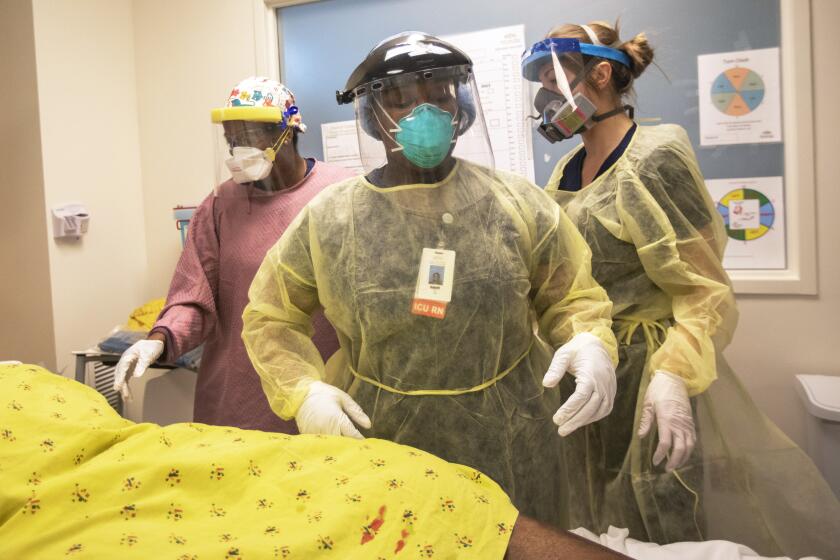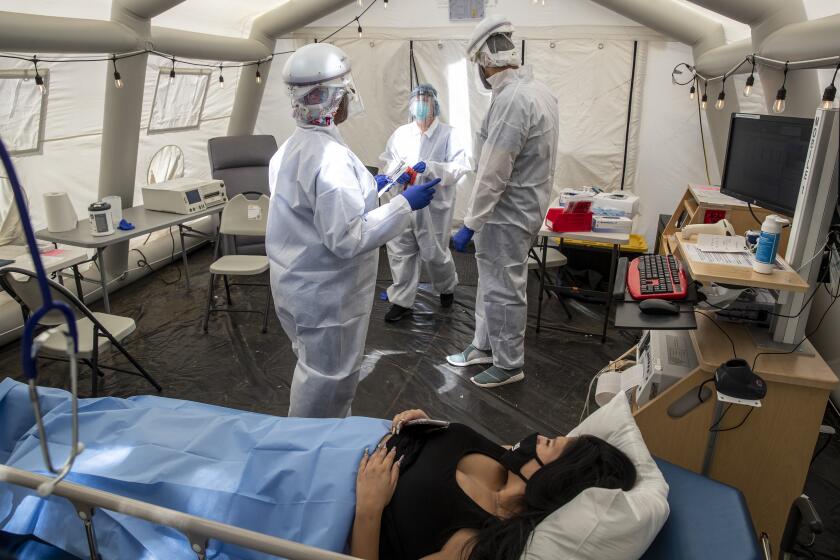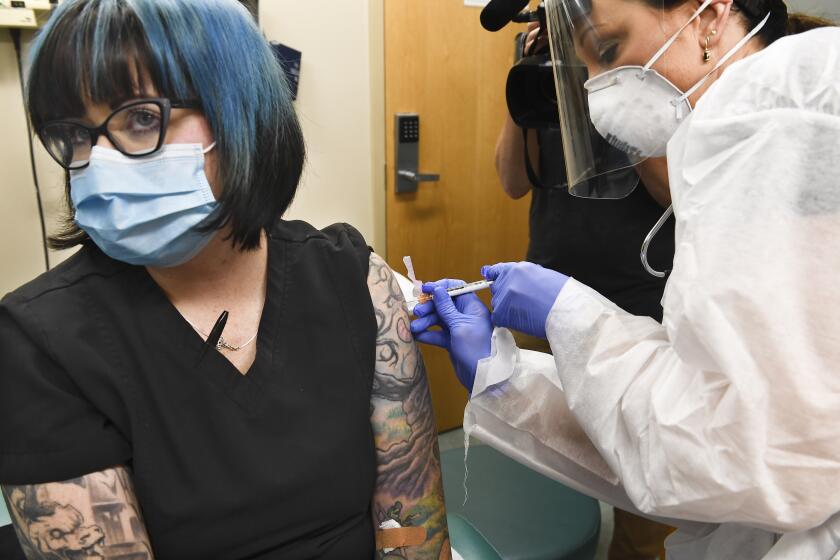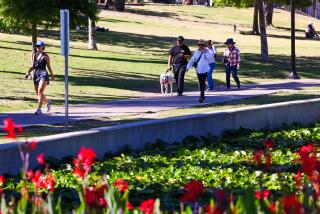L.A. officials are still not sure how or why COVID cases are skyrocketing. It’s a huge handicap
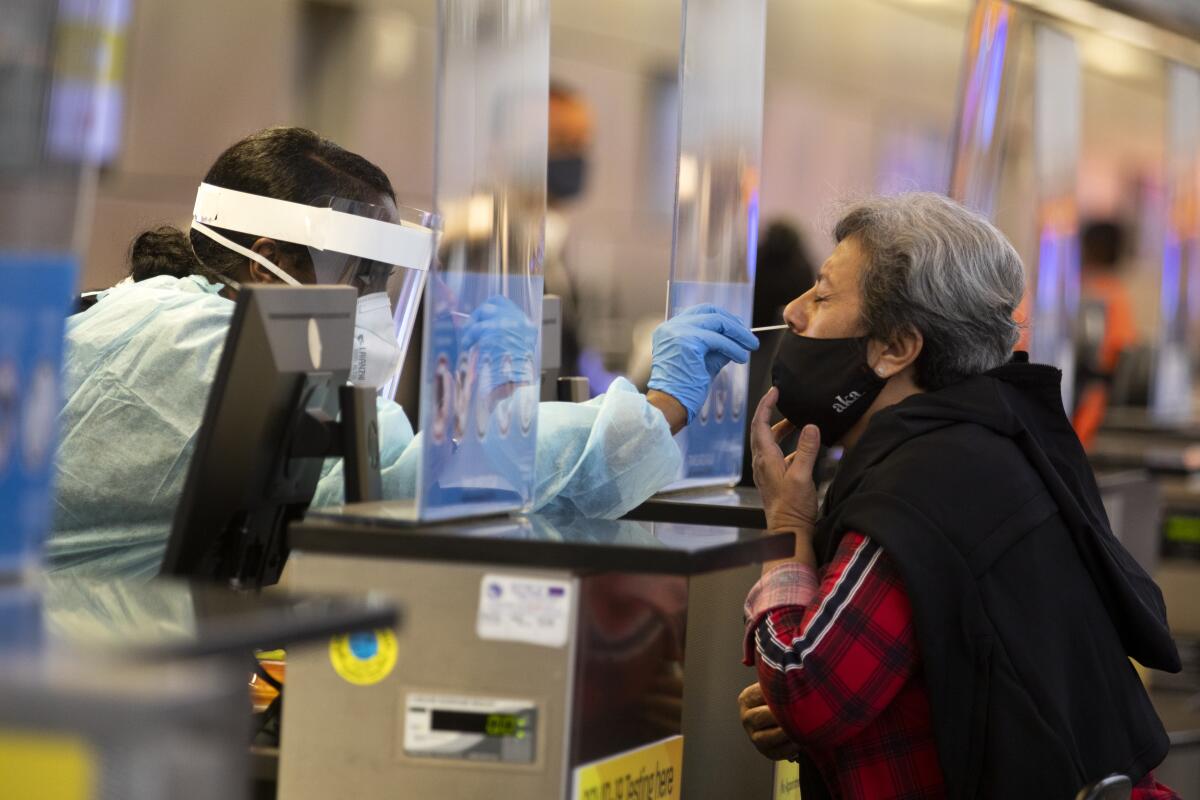
- Share via
Los Angeles officials in recent days have pleaded with residents to cancel social gatherings and announced limited hours for businesses in an effort to counteract a swift rise in coronavirus cases. But the clear messaging belies a murkier reality: They don’t fully understand why so many people are becoming infected.
For months, Angelenos have been prohibited from exercising inside gyms, watching movies in theaters and dining indoors at restaurants. It was with these restrictions in place that L.A. County in early October recorded its fewest cases since the spring.
“The irony about right now is we are approaching our worst numbers with the same things open as [when] we … had our best numbers” a few weeks ago, L.A. Mayor Eric Garcetti said this week.
Gov. Gavin Newsom has announced a stay-at-home order affecting most of California.
The virus itself hasn’t changed, and there has been little relaxation of the rules. Interviews conducted with people who have recently tested positive for the coronavirus don’t show any significant shifts in behavior compared with a month ago, such as more visits to restaurants or other businesses, said Dr. Jeffrey Gunzenhauser, L.A. County’s chief medical officer.
For the vast majority of people sick with COVID-19 in L.A. County, officials cannot determine where they contracted the virus, he said. This mirrors national data showing that fewer than half of people with the virus know where they caught it.
“Very often, these reported places they’ve been, we have no knowledge of other people there being infected. So they don’t know and we don’t know where they got the infection,” Gunzenhauser said. “We certainly wish we had a good answer.”
The data limitations speak to the challenges the COVID-19 pandemic poses for contact tracing, a tried-and-true method that public health departments around the world use to track how an infection spreads. With so many people sick with COVID-19 or infected but showing no symptoms, identifying where someone contracted the virus becomes nearly impossible.
We want to hear from healthcare workers in California currently dealing with the latest surge in coronavirus cases.
“Contact tracing just can’t keep up with it,” said Kevin Malotte, a Cal State Long Beach professor emeritus of epidemiology. “You have to make kind of educated guesses as to what you think is going on.”
There is plenty of other information pointing to indoor environments as primary sources of coronavirus spread, particularly when people don’t wear masks. The more time people spend together and the closer together they are, the more the risk increases.
In L.A. County, recent clusters of cases have been linked to dinner parties and other kinds of indoor social gatherings, including those celebrating the Dodgers and Lakers championships, officials say. Meanwhile, the number of new people being infected with the coronavirus in the county has more than doubled in the last few weeks.
Additionally, a countywide survey conducted by USC found that instances of people coming in close contact with others they don’t live with, and also gathering in groups of 10 or more, rose steadily in September and October. At the end of October, 60% of those surveyed had had close contact with people outside their household in the previous seven days.
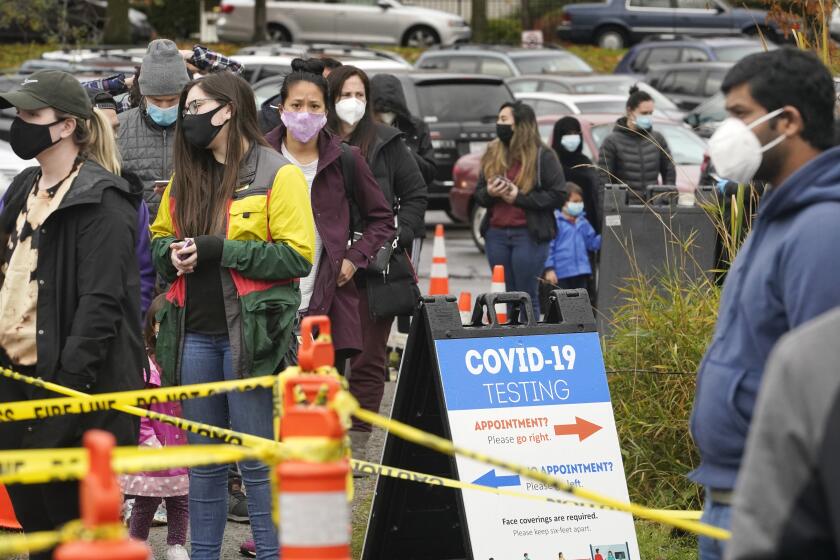
Confirmed U.S. death toll from coronavirus tops 250,000, the highest in world
The confirmed U.S. death toll from the coronavirus now exceeds 250,000, the highest in world, according to Johns Hopkins University’s count.
“We should each ask ourselves and those we care about to commit making the changes we know will prevent a great deal of suffering and death from COVID-19,” Barbara Ferrer, the L.A. County director of public health, said Wednesday. “Change any plans for indoor gatherings that involve people not in your household.”
The trends are particularly worrying given the approach of Thanksgiving, when people traditionally host large gatherings. Ferrer said that if cases and hospitalizations continue to rise at their current rate, the county will reach a level of transmission that would prompt a stay-at-home order in early December lasting at least three weeks.
But she added that quick action can prevent the county from reaching that threshold.
“I hope with every single bone in my body that we don’t get there,” she said.
One of the tools to prevent a surge is contact tracing, by which public health departments gather information on people who have fallen sick to notify others infected and understand patterns of spread.
When someone tests positive for the coronavirus, the doctor or lab notifies the public health department, which then reaches out to the patient to gather information about their illness. In L.A. County, 99.7% of those infected are contacted by the Department of Public Health within 24 hours, according to county data.
But once the contact tracers reach out, only about 63% of people agree to complete the interview, greatly limiting officials’ information. In an effort to address the issue, a long-standing problem during the pandemic, L.A. officials began offering $20 gift cards to people who agreed to be interviewed.
The dire picture painted Wednesday illustrates the ferocity with which COVID-19 has roared back to life over the past few weeks.
When people comply, the tracers can collect data on others the sick person may have also infected. The goal is to notify them promptly so they can quarantine and be tested.
Between Nov. 4 and Nov. 10, 8,290 people who tested positive for the coronavirus were interviewed by county workers. An additional 5,319 contacts of people infected were identified to be notified of their exposure, though only 72% agreed to complete an interview.
As holidays approach and COVID-19 figures rise, California shows the danger of a lack of discipline and a yearning to get back to normal.
Gunzenhauser said the department is developing field teams to send to the most affected neighborhoods to try to approach people face-to-face in the hope of obtaining more interviews. But even when the necessary information is provided, it doesn’t always paint a clear picture.
The interviewer asks patients where they went for 14 days before falling sick, because it can take up to two weeks for someone to show symptoms after being infected. But with so many people in the county sick, and so many people asymptomatic, the long list of places they may have visited doesn’t usually provide an obvious culprit, Gunzenhauser said.
Interviews show that people who have recently tested positive visited places such as restaurants, shops, workplaces and churches at the same frequency as people who tested positive a month ago, according to Gunzenhauser.
There’s been a small increase in the percentage of people who had attended a social gathering where someone else had COVID — from less than 1% to 1.5% — but that “certainly doesn’t explain the jump,” he said.
A recent study in the Annals of Internal Medicine found that transmission most often occurs indoors in poorly ventilated spaces, with a large portion originating from people who don’t show symptoms.
There are still many unknowns when it comes to the pandemic, but the early signs of success for two experimental COVID-19 vaccines make a few things clear.
Available data suggest that people are most infectious the day before their symptoms begin, making it even more likely that infections are being transmitted by seemingly healthy people, said the study’s lead author, Dr. Eric Meyerowitz, professor at the Albert Einstein College of Medicine in New York.
“The really challenging thing about this virus in particular, in contrast to some other viruses, [is that] your viral load is rising before the onset of symptoms, so you are infectious before you maybe even know that you have the virus,” he said. “When you’re thinking about is it possible to make some of these indoor settings … safer if you did symptoms screening, that really wouldn’t be sufficient.”
In L.A. County, the likely explanation for the recent upswings, Gunzenhauser said, is that the coronavirus somehow became more prevalent in the community in the last several weeks, perhaps because of the slight uptick in gatherings or people spending more time indoors because of cold weather.
Other experts suggested that the sun setting earlier has forced more people indoors or that cases from other parts of the country where COVID-19 is surging were imported to L.A. County.
But those small changes had ripple effects. As more people fall sick in the community, each interaction people have when they leave their homes becomes more dangerous, Gunzenhauser said.
“All it takes is a slight change in some behavior or practice, and the virus is going to take advantage of that,” he said. “Interactions that at the end of August would not have led to an infection now are, because we have quite a few more people infected.”
Gunzenhauser said this phenomenon has probably also fueled a rise in workplace outbreaks. Outbreaks at workplaces — not including healthcare settings or food facilities — began to surge in L.A. County in late September, with a 70% increase in outbreaks in the second half of that month, and have stayed elevated since.
“Cases are going up in general, so worksites are going up,” he said. “We can do all we can to build in good infection control, but if the community transmission where the worksites are doubles or triples, then the risk just gets higher.”
More to Read
Sign up for Essential California
The most important California stories and recommendations in your inbox every morning.
You may occasionally receive promotional content from the Los Angeles Times.

